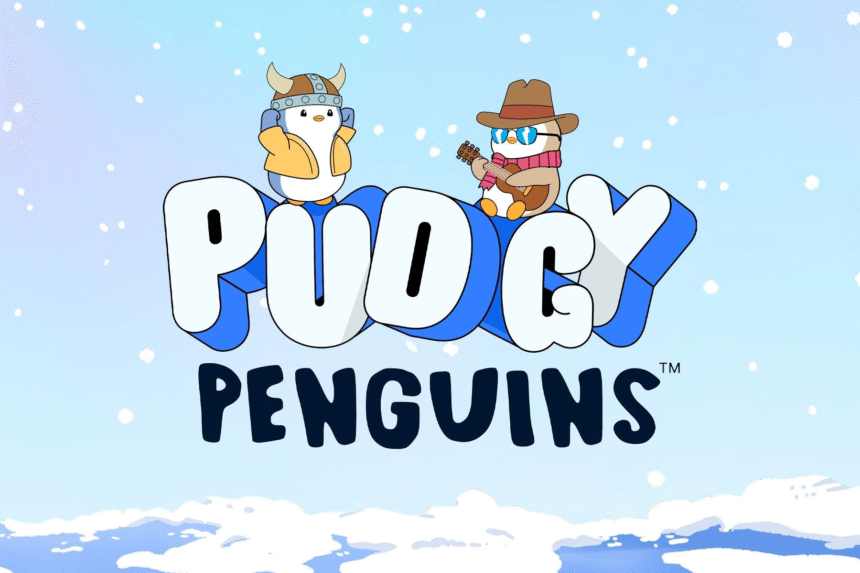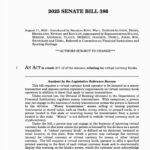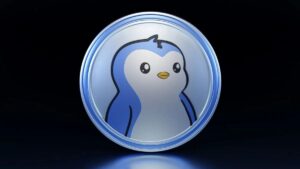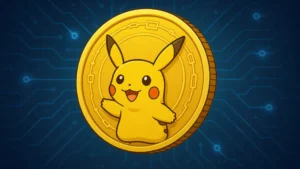Nearly three years ago, the NFT collection Pudgy Penguins teetered on the edge of bankruptcy. Fast-forward to today, and the brand is on track to rake in $50 million in revenue by the end of 2025, thanks to a savvy pivot into the world of physical toys. Luca Schnetzler, better known as Luca Netz, the CEO and owner, built his early fortune through Instagram marketing before diving into toys. In the crypto space, he was a major holder of Pudgy Penguins NFTs, but like many fans, he grew frustrated with the collection’s slumping prices. By April 2022, the project hit rock bottom, prompting Netz to swoop in and buy the parent company, Igloo, for $2.5 million in Ethereum (ETH).
The timing couldn’t have been worse. Just a month later, the Terra ecosystem imploded, kicking off a brutal bear market that hammered NFT values and put Netz’s investment at risk.
We were staring down the barrel—six months of runway left if I didn’t start generating real revenue. Web3 income wasn’t happening, so I turned to what I knew best: physical products.
Netz
This shift to toys wasn’t just a lifeline; it evolved into a powerhouse revenue stream, keeping the lights on during crypto’s dark days and positioning Pudgy Penguins for the NFT resurgence fueled by a collectibles boom. While the NFT floor price soared from under 1 ETH to over 15 ETH, physical merch became the unsung hero, blending retail smarts with crypto flair.
From Instagram Hustle to NFT Savior: Netz’s Backstory
Netz’s journey is a classic rags-to-riches tale. Growing up in an unstable family that bounced around, he ditched traditional schooling for entrepreneurship. At 18, he hit his first million via a Shopify dropshipping gig, hawking jewelry hyped on Instagram pages for hip-hop stars. Later, he became CMO at Gel Blaster, landing their water-pellet toy guns in giants like Walmart.

When NFTs tanked amid broader crypto woes—like the SEC’s staking scrutiny on Ethereum—Netz leaned on his consumer goods expertise to launch Pudgy Penguins plushies and toys.
By May 2024, the brand celebrated selling its millionth toy in just a year. “Toys are high-volume, low-margin,” Netz explained. “We started small to cover costs and avoid begging the community for funds or shutting down. Now, it’s a multi-million-dollar operation.” Crypto projects typically flock to X, Discord, and Telegram for community building, but Netz bucked the trend by prioritizing Instagram’s visual appeal. “It didn’t make sense to ignore it,” he said. “Big retailers like Walmart care about social proof, not NFT metrics.” Today, Pudgy Penguins boasts 1.9 million Instagram followers—dwarfing its 728,100 on X—with engaging reels featuring animated penguin adventures that build a family-friendly vibe.
Collectibles Craze Revives NFTs, With Pudgy Leading the Charge
NFTs have been pronounced dead more times than we can count, yet trading volume dipped below $1 billion in Q2 2025, per DappRadar. Icons like Bored Ape Yacht Club (BAYC) plummeted from a 153 ETH peak in May 2022 to just 13.44 ETH today. CryptoPunks, the market cap king, sits at 52.97 ETH after topping out at 125 ETH in 2021. But hope is stirring. Recent spikes in CryptoPunks and Moonbirds sales signal a comeback, mirroring a physical collectibles surge. eBay’s Q2 earnings hit $2.7 billion, up 6%, thanks to hot items like Pokémon cards. “Pokémon’s exploding—one card doubles in value in weeks,” Netz noted. “When physical collectibles thrive, digital ones aren’t far behind.” The Labubu phenomenon—adorably eerie figures in blind boxes—has gone viral, with one fetching $10,500 on eBay. Platforms like Courtyard, which tokenizes real-world collectibles (think Pokémon packs via blockchain vending machines), rank among 2025’s top NFT performers. “This feels like the most optimistic NFT moment in four years,” Netz said. “Retail investors love the thrill of minting and collecting—it’s crypto’s fun side.” Pudgy Penguins now outranks BAYC in popularity, proving that blending digital and physical worlds pays off.
Beyond NFTs: Pudgy Penguins Eyes Crypto Mascot Status
At heart an NFT project, Pudgy Penguins is expanding its empire. In December 2024, it dropped the Solana memecoin $PENGU via a $1.5 billion airdrop. After an initial price dip, it’s rebounded, buoyed by the brand’s NFTs, toys, and even a proposed ETF from Canary Capital. Netz envisions Pudgy as crypto’s ultimate mascot, akin to McDonald’s golden arches. “Arches; penguins,” he quipped, nodding to the film The Founder about Ray Kroc. He dreams of Pudgy assets in ETFs, corporate treasuries, and beyond. While the NFT market lags its 2021 highs and hype cycles fizzle fast, hybrid models like Pudgy’s—melding toys, social media, and blockchain—are bucking the trend. Physical-digital crossovers are a bright spot in a sluggish sector. This strategy shielded Pudgy during crypto’s implosions, when others fleeced communities. “We built authentically when no one else did,” Netz said. “Now, as cycles turn, we’re primed to lead.”

















